- Home
- Jerold Last
Unbearably Deadly (Roger and Suzanne South American Mystery Series Book 9)
Unbearably Deadly (Roger and Suzanne South American Mystery Series Book 9) Read online
UNBEARABLY DEADLY
BY JEROLD LAST
This novel is a work of fiction. Names, characters, places, and incidents are products of the author’s imagination or are used fictitiously and not to be construed of as real. Denali National Park is a real place, and is physically very much the same as I describe it, at least the places I have actually seen (both ends and the middle of the long bus ride, as well as the various stops between). However, as used and referred to in the novel, all of the human and animal characters and events are totally imaginary. The National Park Service does an excellent job of managing and maintaining the Park with very limited resources, and my fictional Park Rangers bear little resemblance to the real ones. Any resemblance to actual events, locales, organizations, or persons, living or dead, is entirely coincidental.
Copyright © 2014 Jerold Last
All rights reserved. No part of this book may be used or reproduced in any manner whatsoever without written permission, except in the case of brief quotations embodied in critical articles and reviews.
ACKNOWLEDGEMENTS
My wife Elaine made several useful suggestions and constructive criticisms, and helped with editing innumerable drafts of the manuscript. Elaine also shared memories of her and my time spent visiting Denali National Park and the long, but interesting, train trip from Anchorage to the Park.
I (fictitiously) put the FBI offices a few blocks from the hotel we stayed at en route to the Park, so the description of the neighborhood in Anchorage is the real thing as far as both Elaine’s and my memories are concerned.
This book has its roots in frequent requests from Elaine and several of her friends for me to move my characters from the world of the Mercosur region of South America to other places somewhat off the beaten track we have visited.
To the best of my ability I avoided the temptation in this book to base any of the characters on real people we know. Several of the people Roger and Bruce meet in Alaska have one or more looks or behaviors taken from real life to give a bit of authenticity to the scene, but any resemblance to real people living or dead is purely coincidental.
If you’d like to learn more about the original backstory for the recurring series characters in this novel, we first met Vincent Romero and Francis and Roberta Roberts in my earlier novel in this series entitled “The Surreal Killer”. Barbara and Gretchen Kaufman were introduced in “The Origin of Murder”.
TABLE OF CONTENTS
Prologue
Chapter1. Our newest case comes calling
Chapter2. Anchorage
Chapter3. Anchorage to Denali
Chapter4. The Alaska wilderness by ATV
Chapter5. You meet the strangest people on buses
Chapter6. Denali National Park
Chapter7. Forensic sciences, Alaskan style
Chapter8. Revisiting the case
Chapter9. Where there’s a crime, there’s a plan
Chapter10. Back to Denali
Chapter11. There’s gold in them thar’ creeks
Chapter12. Fishing for information
Chapter13. More activities, more suspects
Chapter14. Our first Kantishna Lodge party
Chapter15. Wilderness biking, detective style
Chapter16. A party after the party
Chapter17. The FBI arrives
Chapter18. The next day
Chapter19. The killing field
Chapter20. Exploring the mine
Chapter21. The beginning of the end
Chapter22. Another dinner with the FBI
Chapter23. Anchorage: A new day dawns
Chapter24. The Bear
Epilogue
From the Author
Prologue .
It was the middle-aged couple’s vacation of a lifetime. Roberta and Francis Roberts spent most of their adult lives in the driest place on Earth, Northern Chile’s Atacama Desert, which receives exactly zero inches of rainfall every year. Now they were vacationing in Central Alaska, their first real vacation in decades. They reveled in the contrast between the stark dryness of their desert home and the lush greenery of the forests and tundra of the Alaskan wilderness in the late spring season snowmelt. Roberta sat by the window of the bus, where the view of the vast park was best. Francis sat next to her, gently holding Roberta’s hand on the cushion separating their seats. He occasionally squeezed her hand to reaffirm his presence beside her.
“What a beautiful day!” exclaimed Roberta, “Perfect surroundings, perfect weather, and your perfect company. I’m so glad you talked me into coming almost half way around the world to visit Alaska, Francis.”
Squeezing his wife’s hand once again, Francis turned to look directly at Roberta. “This was the trip at the top of my bucket list, honey. While there are still a lot of places I’d like us to see, I could die happy after we finish this tour of Alaska. I love the lush forests and everything green and growing. It reminds me of Minnesota. All the lakes and rivers, the birch and aspen forests, everything green. It really does remind me of growing up in rural Minnesota.”
Roberta squeezed his hand back. “I know exactly what you mean, Francis. The mountain peaks covered with snow off in the distance and all around us remind me a lot of where I grew up in Montana. You know I love Chile, especially Iquique where we live, but this scenery looks like when I was growing up. It’s like comfort food. It makes me feel good just to look out the bus window at it.”
Roberta pulled out her iPhone and found a series of photos. They shared long looks at the two young grandchildren they hadn’t seen in three years except via YouTube and Flicker, since their son and daughter-in-law had moved to the United States so both of them could attend graduate school in Virginia. “Our next stop after Alaska,” declared Francis. “I’m really looking forward to that one, too.”
They looked closely at each other, with the familiarity of a couple that had been happily married for a long time. Francis was in his 60s, still in the excellent shape of a well-conditioned athlete, medium height and weight, a full head of graying hair. The most striking thing about his appearance was how ordinary he looked. He had the face and manner of a man who could blend into any group he was part of. Roberta was about a year younger than Francis, and looked like Hollywood’s version of the perfect mother in a TV sitcom. Pretty, but not too pretty. She had a pleasant, but not bubbly, personality, and was easy to chat with on almost any topic. Both were completely bilingual in English and Spanish. Both had lived in Iquique, Chile since completing the CIA’s training program for spies, which they had entered immediately after they celebrated graduating from the University of Minnesota by getting married. The couple had arrived in Chile a few years after the Pinochet dictatorship had come to power in 1974 and had remained in deep cover in Iquique since then.
Several hours later the bus arrived at the Kantishna Lodge, where they’d be staying for the next several days, just in time for a late lunch of soup and salmon. They were assigned to Cabin #8 behind the lodge. The Roberts quickly unpacked and joined a small group going out on mountain bikes for a guided tour of the area around the Lodge.
The guide introduced himself as Lloyd Farquahr, an Anchorage native. “I was born and raised down in Anchorage,” continued the guide, “which makes me a real native Alaskan. Today we’re going to take a ride around the area on these mountain bikes, which can handle dirt roads and off-road travel very well. If we go too fast for anyone please let me know and we’ll slow down. Otherwise, there’s a lot to see so I’d like to set a fairly fast pace if we can handle it. The area ar
ound the lodge has a little of everything in it, so you’ll see traces of gold and silver mining, fishing, hunting, old roads, and authentic Alaskan bush country. Before we begin, let’s take a couple of minutes for a quick history lesson about Alaska so you can put what we see into context.
“Alaska was purchased by the US, which was still mainly an agrarian society, from Russia in the 1860s. People laughed at the Federal Government for spending a lot of money on a huge piece of ice far from home, calling it “Seward’s Folly.” The gold rush to Canada’s Klondike and a second gold rush in Alaska itself brought a lot of people up here to get rich quick and put Alaska on the map. By the end of the 19th century, the first real movement pushing for Alaska statehood began. It didn’t get very far. Congress was worried that Alaska didn’t have a large enough population and it was too spread out for it to be a worthwhile addition to the United States. The economy in those days was based on mining and commercial fishing, initially mostly in the Aleutian Islands. The politicians in Washington also thought Alaska’s economy was too unstable to take on the responsibilities of statehood.
“All travel and shipping of goods in those days was done by boat or dogsled overland. Alaska was a long way from the Pacific Coast of the continental USA. Packing houses preserved cod and herring by salting them. New salmon canneries were opened to exploit that fishery. American hunters and fishermen also expanded into the Interior and Arctic Alaska, exploiting the furbearing animals, fish, and other game on which natives depended. That led to a great deal of friction between natives and newcomers. Alaska officially became a Territory in 1912.”
The guide stopped for a moment and pointed to a small group of tourists panning gold from the creek running alongside the Lodge. “That’s how they mined gold back in the old days I’m telling you about.”
He pointed at a couple of fly fishermen casting in the creek. “They also fished creeks and rivers like that one to land salmon and trout to eat and to preserve by smoking so they had food over the long winters.”
Farquahr returned to his history lesson, “Prices of fish and copper, which were the main basis of Alaska's economy at the time, declined during the depression of the 1930s. As exports to the mainland of the US dropped, wages dropped and large numbers of workers migrated back to the contiguous 48 states looking for jobs. The workforce decreased by more than half. In 1935, President Roosevelt transferred unemployed Americans from agricultural areas to try farming in Alaska, in hopes of lowering unemployment in the USA and creating a sustainable agriculture industry in Alaska. The new colonists were largely from the northern states, Michigan, Wisconsin, Minnesota, and the Dakotas because the politicians believed only those who grew up with climates similar to that of Alaska's could handle the difficulties of settler life there.
“It took until World War II and the Japanese invasion for Washington to take a long look at Alaska's strategic importance, and to really start to think about statehood. In 1942, the Alaska-Canada (ALCAN) Military Highway was completed, forming an overland supply route to Alaska and onward further west to the USSR on the other side of the Bering Strait. Running from Great Falls, Montana to Fairbanks, the road was the first stable link between Alaska and the rest of America. But the exploration and settlement of Alaska wouldn’t have been possible without the development of modern airplanes for the war effort, which allowed for the influx of settlers into the state's interior, and rapid transportation of people and supplies throughout.
“Ultimately, the discovery of oil on the Kenai Peninsula changed the fate of Alaska. President Eisenhower signed the Alaska Statehood Act into federal law on July 7, 1958. Alaska was admitted into the Union on January 3, 1959. The territorial capital, Juneau, was named as the new state capital.”
He finished speaking, walking over to his bicycle. “Let’s go for a ride and see what Alaska really looks like.” The guide climbed up on his bike and started pedaling. The rest of the group followed him in a ragged line along a two-lane dirt and gravel road formerly used for hauling out logs from freshly cut trees behind the Lodge. Roberta and Francis took their time, ending up at the back of the group following immediately behind another tourist couple half their age. The weather was perfect for biking, blue sky with only an occasional puffy white cloud, sunshine, and cool at 60-something degrees.
The group had a nice view of the birch forest on both sides of the road. To their left was endless forest. To the right was a thinner stand of trees, with periodic breaks through which they could see the creek. Occasional fishermen and optimists panning for gold were sprinkled at intervals along the creek. Large pieces of equipment left over from the mining era were rusting into oblivion in cleared areas occurring seemingly at random on either side of the road.
Farquahr stopped the group several times to point out birds, animals, and interesting trees as they passed by. Bald eagles and other raptors perched high on tree branches or soared majestically on thermals as they hunted dinner, usually fresh salmon from the creek. Large bears, some with this year’s cubs in tow, grunted as they lumbered along at a distance from the bikers. The bears shared the salmon swimming in the creek with the eagles.
The bikes made little noise as they cruised along, so approaching the animals in the dense cover on either side of the road without warning them of their approach was almost too easy. The guide repeated his earlier warnings about not getting close to the bears and the importance of making some noise to warn the bears of their approach. Occasionally, he pointed to specific pieces of abandoned equipment, explaining how they had been used to wrestle gold from the creek bed gravel or hard rock mines along this trail.
About a mile or mile and a half after they’d left the lodge area, Roberta spotted a small path heading off into the seemingly solid wall of wood that was the birch forest on their left. She pointed it out to Francis suggesting, “Let’s come back here on our own tomorrow or the next day and explore the area off-road a bit. We can take sandwiches and have a nice picnic.”
“Sounds good to me,” replied Francis. “This is a beautiful area I’d like to see much more of.” Both of them memorized a few landmarks alongside the road so they could find this spot again.
The next day dawned cloudy and gray, with a cool wind. The lodge staff assured them the weather would clear and it would be a good day for biking. After a big breakfast of grilled salmon and eggs with endless cups of coffee, the Roberts were ready to go. A couple of lunches were placed in a sealed, bear-proof container on Francis’ bike. “Just stay on the road and you can’t get lost,” they were assured by the staff.
As they started off on their bikes, the sun broke through the clouds, presaging a nice day after all. Roberta took it as an omen; today was going to be another perfect day here in paradise.
It was the perfect place to ambush the Roberts, a large clearing in the middle of a heavily forested area. The narrow dirt road continued onward from the clearing into the foothills, which were destined to become the highest mountains in the USA further to the north. An old, but still functional, fire pit was the most obvious man-made feature visible upon entering the clearing.
“The Bear” had perfect cover in its den, the old mine overlooking the clearing gouged out of the rocky foothills. The entrance to the mine itself was so overgrown with bushes and trees as to be invisible until you stood right in front of it. “The Bear” wore nylon gloves, a long coat that covered its entire body and clothing from neck to ankles, nylon shoe protectors like those worn by CSI personnel at a crime scene over the shoes to prevent contaminating the evidence, and a cap to protect its hair in case of blood spatter.
Laying on the floor of the old mine, completely concealed from the sight of anyone in the clearing, were several objects. The tranquilizer dart air rifle had an over-under barrel design, so could fire two darts loaded with anesthetic at two targets within a few seconds in the hands of someone who knew how to use it. A modern laser-type gun sight made hitting the animal you wanted to put to sleep as simple as planting the red
dot on the target and pulling the trigger. Mining tools, an axe, two oddly shaped clubs, and rocks and stones from the ongoing mining activity here completed the clutter on the floor. Various articles of clothing including clean jeans, a shirt, and a down parka type jacket hung on hooks on the wall.
***********************************************************************
Thud. The sound was a whisper in the sheltered area in the middle of the birch forest. Roberta wasn’t even sure she’d heard it. She looked up just in time to see Francis’ bike, just a few feet ahead of hers, swerve, barely missing a low tree branch as he fell off the bike. There wasn’t enough time to react before she heard another dull thud, just about the same time she felt something like an insect bite in her back near the shoulder blade, her bike tipping over as she fell to the ground. The last thing she remembered was crawling over to the now quiet body of Francis laying on the ground, putting her hand over his, and squeezing his hand gently.
***********************************************************************
“The Bear” carefully laid the dart rifle against a tree, picked up a pair of leather gloves, and put them on over the nylon gloves. It leaned over to pick up the claws lying on the ground attached to the two clubs, then walked over to the two bodies lying in the grassy clearing. Whack! Whack! “The Bear” carefully and methodically slashed the two bodies with powerful blows from the clubs. After a minute or two the carnage stopped. Two dead bodies lay still in the clearing, blood oozing from dozens of deep wounds where the claws had penetrated Francis and Roberta’s backs and necks. “The Bear” stopped smiling. An expression of satisfaction appeared on its face. It was almost time to go.

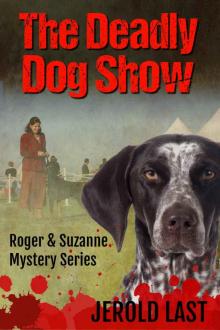 The Deadly Dog Show (Roger and Suzanne South American Mystery Series Book 6)
The Deadly Dog Show (Roger and Suzanne South American Mystery Series Book 6)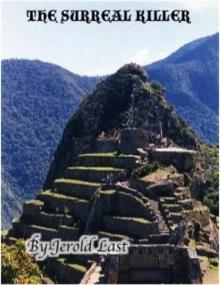 The Surreal Killer (Roger and Suzanne South American Mystery Series Book 2)
The Surreal Killer (Roger and Suzanne South American Mystery Series Book 2) The Body in the Bed (Roger and Suzanne South American Mystery Series Book 5)
The Body in the Bed (Roger and Suzanne South American Mystery Series Book 5)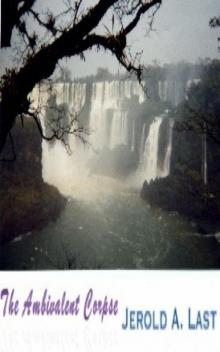 The Ambivalent Corpse (Roger and Suzanne South American Mystery Series Book 1)
The Ambivalent Corpse (Roger and Suzanne South American Mystery Series Book 1) Unbearably Deadly (Roger and Suzanne South American Mystery Series Book 9)
Unbearably Deadly (Roger and Suzanne South American Mystery Series Book 9)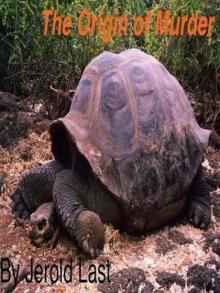 The Origin Of Murder (Roger and Suzanne South American Mystery Series Book 8)
The Origin Of Murder (Roger and Suzanne South American Mystery Series Book 8)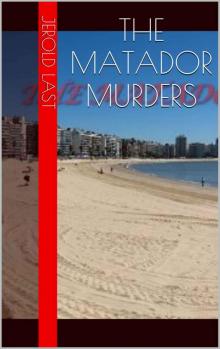 The Matador Murders (Roger and Suzanne South American Mystery Series Book 4)
The Matador Murders (Roger and Suzanne South American Mystery Series Book 4)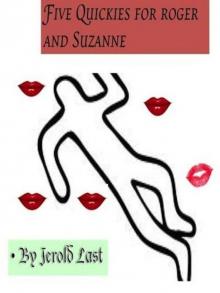 Five Quickies For Roger And Suzanne (Roger and Suzanne South American Mystery Series Book 7)
Five Quickies For Roger And Suzanne (Roger and Suzanne South American Mystery Series Book 7)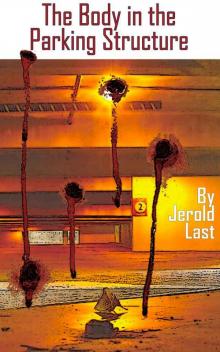 The Body in the Parking Structure (Roger and Suzanne South American Mystery Series Book 4)
The Body in the Parking Structure (Roger and Suzanne South American Mystery Series Book 4)